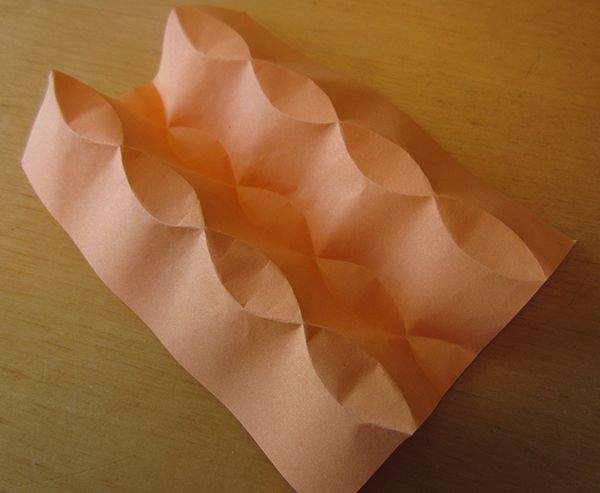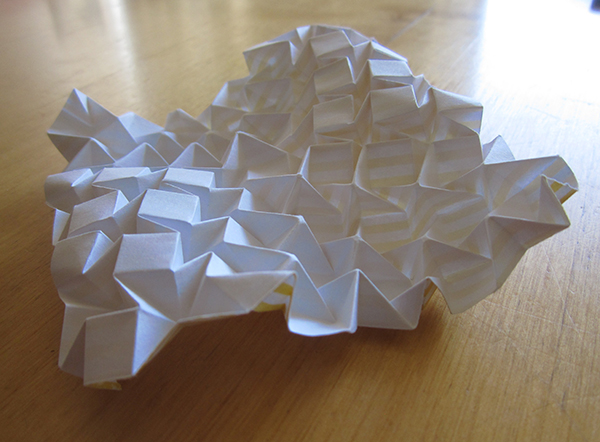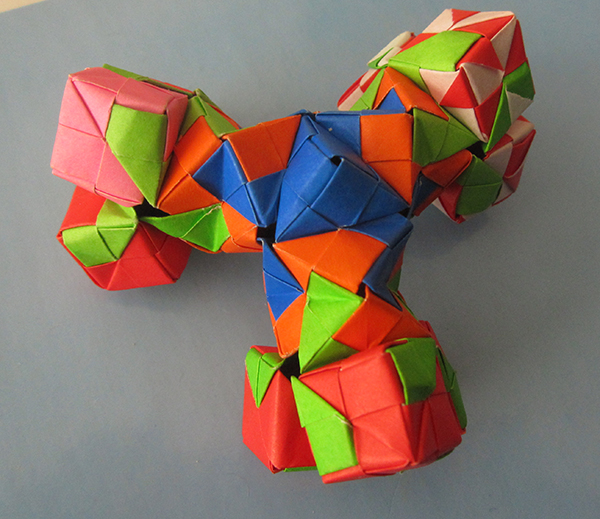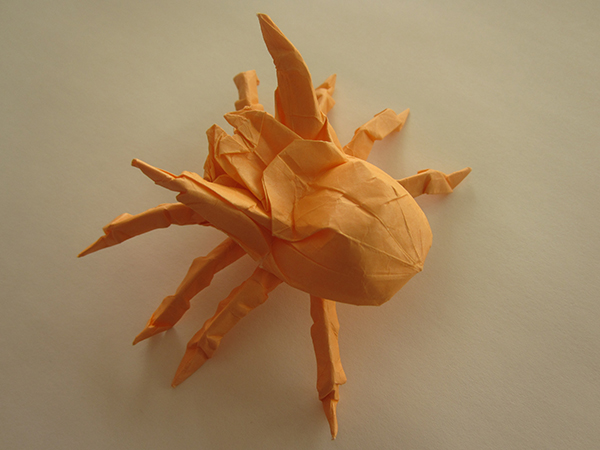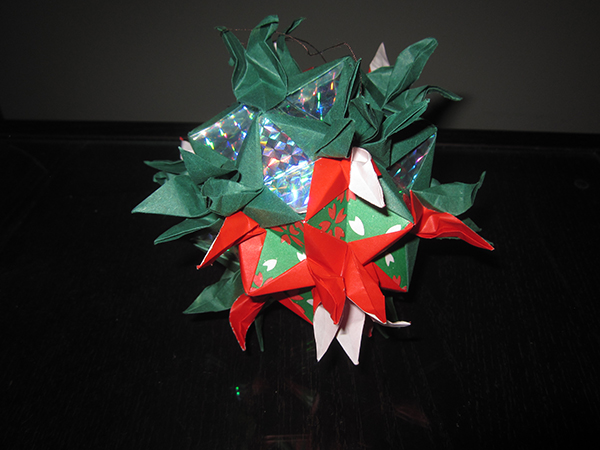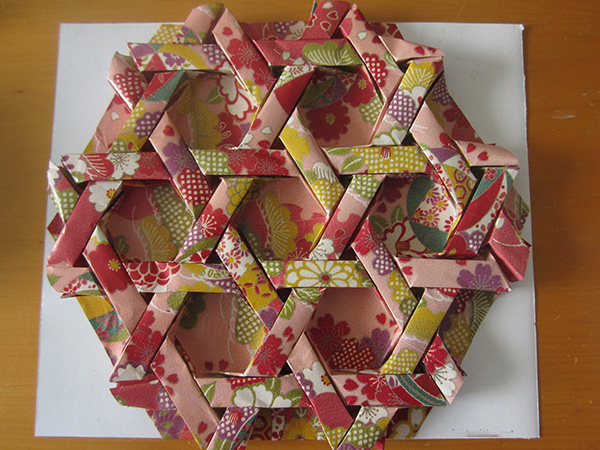
Three Axis Woven Design, designed by David Huffman
I haven’t been posting much origami lately, because I haven’t been making any. But I still have quite a number of models in my back catalog. This is the Three Axis Woven Design, designed by David Huffman, later reconstructed and named by Erik Demaine.
This piece was painstakingly constructed as a gift for my grand aunt, who recently died. She was an actress who played Asian characters circa the 1950s, and was a great appreciator of the arts. She lived a full life.


